We keep getting closer to simulating a human being by running a process in a computer. On the street, the dream is that we might get software immortality. And I predicted it forty years ago.

[Photo credit: Bart Nagel]
How does it work? You start with a large data base on what a given person was like: what they said and wrote, how they talked, and what they did. This is what I have named a lifebox. Once you have a lifebox, the task is to equip it with an interface that allows people to talk to it. And next we want the lifebox to begin generating original material. The big surprise is that large language models and wares like ChatGPT seem to be making this happen—or at least getting a step closer. So there’s a lot of buzz.

It’s not very well-known that, starting in 1980, I was one of the very first people to talk about software immortality. By virtue of hindsight, people like to imagine that these ideas were obvious or “in the air.” They weren’t. The very word “software,” was little known.
I developed my ideas in the early 1970s during discussions with no less a man than Kurt Gödel at the Princeton Institute for Advanced Study—and while writing my Rutgers University Ph. D. thesis on mathematical logic. I further refined my ideas of software immortality while studying and lecturing at the Mathematics Institute in Heidelberg, Germany, on a Humboldt Foundation grant from 1978 – 1980.
I wrote my novels White Light and Software in Heidelberg. And while I was in Heidelberg I further developed my notion of a software mind in my nonfiction book Infinity and the Mind, which is still in print from the Princeton University Press.
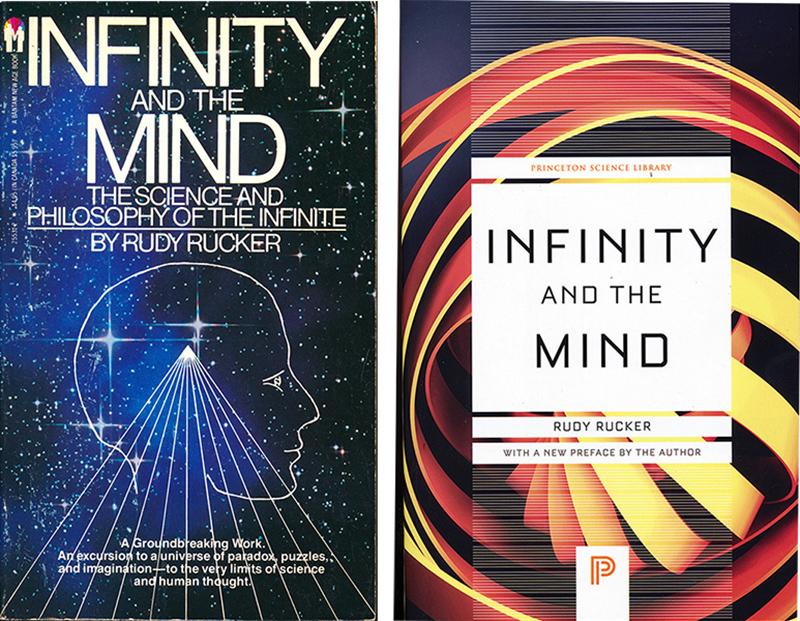
Infinity and the Mind has some material on my conversations had with Gödel about what I was then calling robot consciousness.
The last time I spoke with Kurt Gödel was on the telephone, in March 1977. I had been studying the problem of whether machines can think, and I had become interested in the distinction between a system’s behavior and the underlying mind or consciousness, if any.
What had struck me was that if a machine could mimic all of our behavior, both internal and external, then it would seem that there is nothing left to be added. Body and brain fall under the heading of hardware. Habits, knowledge, self-image and the like can all be classed as software. All that is necessary for the resulting system to be alive is that it actually exist.
In short, I had begun to think that consciousness is really nothing more than simple existence. By way of leading up to this, I asked Gödel if he believed there is a single Mind behind all the various appearances and activities of the world.
He replied that, yes, the Mind is the thing that is structured, but that the Mind exists independently of its individual properties.
I then asked if he believed that the Mind is everywhere, as opposed to being localized in the brains of people.
Gödel replied, “Of course. This is the basic mystic teaching.”
Deep stuff. And the point I’m making here is that the notion of software immortality was not some trite, obvious thing that anyone at all could have written about. I had to dig deep and think hard to work it out. It was new.
This said, I have to admit that the Wikipedia entry on “Mind Uploading in Fiction” mentions some earlier SF about the topic, and yes, it does mention my novel Software. But I want more! I do feel I can say I was the first to write about software immortality in a semi-realistic way that matches our current technology.
Three or four years after publishing Software, I expressly introduced the notion of a lifebox, and I’ve continued writing about this for forty years.
But as I say, I don’t seem to get much credit in popular articles, and usually not even a mention. As fellow cyberpunk Bruce Sterling would say, that chaps my ass.
Today’s post is designed to build up my case. I’ll include extended quotes from my writings, accompanied by comments, and as usual I’ll toss in some random images I’ve made. As I always say, at the surreal, transreal, synchro level, any image goes with any text.
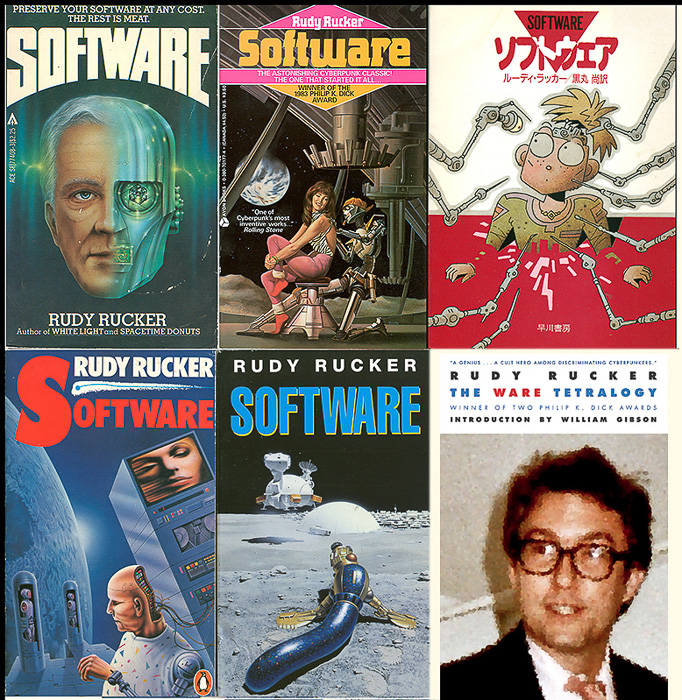
My involvement with lifeboxes goes back to my Phillip K. Dick-Award novel Software, written in 1980 and published in 1982. A race of intelligent robots called boppers have evolved on the Moon. And the boppers want to confer immorality on their designer, Cobb Anderson. To achieve this, they extract the software from Cobb’s brain—by, in effect, eating it and analyzing the contents. And then they put the Cobb software in control of a robot body.
Here’s Cobb’s reaction when he comes to.
It was still sinking in. Intellectually he had always known it was possible. A robot, or a person, has two parts: hardware and software. The hardware is the actual physical material involved, and the software is the pattern in which the material is arranged. Your brain is hardware, but the information in the brain is software. The mind… memories, habits, opinions, skills… is all software. The robots had extracted Cobb’s software and put it in control of this robot body. Everything was working perfectly, according to plan. For some reason this made Cobb angry.
“Immortality, my ass,” he said, kicking the bathroom door. His foot went through it.
The thing that bothered Cobb the most was that even though he felt like he was all here, his brain was really inside a computer somewhere else. Where?
Suddenly he knew. The Mr. Frostee truck, of course. A super-cooled bopper brain was in that truck, with Cobb’s software all coded up. It could simulate Cobb Anderson to perfection, and it monitored and controlled the robot’s actions at the speed of light.
You’ll notice something odd here. Rather than having his software running on a device inside his body, Cobb’s software is running on a large supercooled computer inside a nearby ice-cream truck! This was my early 1980s substitute for having the process run on a microprocessor in Cobb’s robot body—or have the software be running in the cloud. But for the sake of a good cyberpunk tale, it was kind of cool to have a large, slightly evil ice-cream truck following Cobb around.

In my follow-up novel Wetware of 1988, also winner of a Phillip K. Dick Award, things get gnarlier. Rather than running your personality software on an old-school electronic computer, you run it on something called a Happy Cloak. (This name was, by the way, lifted from a William Burroughs novel.) A Happy Cloak is a chunk of moldy piezoplastic that acts as a big computer. So one way to achieve software immortality might be to transfer your personality onto a Happy Clock, and then let the Happy Cloak ride around on a meat clone of your old body. And in Freeware and Realware, things get still weirder. You can read all about it in the Wares.
But let’s stick to the basic idea of modeling a human personality with software. I clarified this in my 1986 story, “Soft Death,” which appeared in the Magazine of Fantasy and Science Fiction. I think this is the place where I coined the word lifebox. The main character in the tale, one Doug Leckesh, has signed up with a company called Soft Death—who promise him immortality. He’s in the care of a tech named Lo Park.
Photo of Bruce Sterling here just for kicks. My fellow cyberpunk from the start.
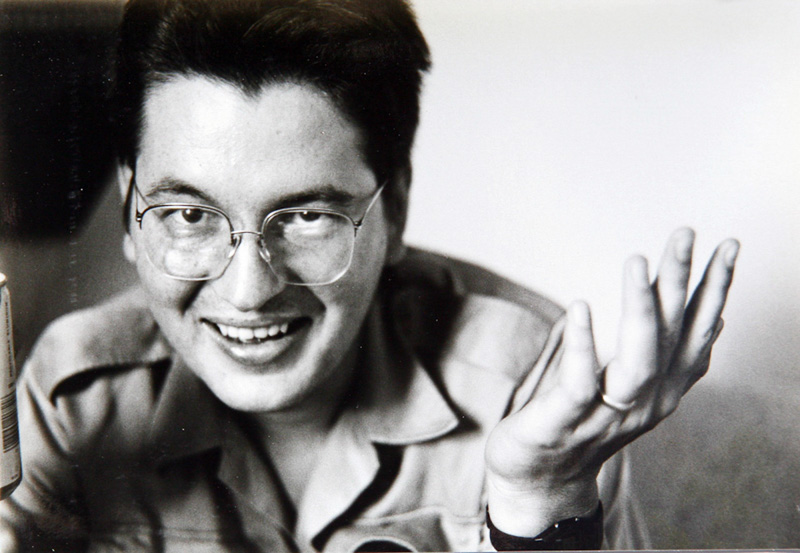
Lo took a device the size of a cigarette-pack out of her desk. It had two little grilles, for microphone and speaker. “We call this a lifebox. Basically, I want you to tell it your life story. Tell everything. It takes most people a couple of weeks.”
“But…I’m no writer.”
“Don’t worry; the lifebox has prompts built into its program. It asks questions.” She flicked a switch and the lifebox hummed. “Go on, Mr. Leckesh, say something to it.”
“I…I’m not used to talking to machines.”
“What are some of the first machines you remember, Doug?” asked the lifebox. Its voice was calm, pleasant, interested. Lo nodded encouragingly, and Leckesh answered the question.
“The TV, and my mother’s vacuum cleaner. I used to love to watch the cartoons Saturday morning—Bugs Bunny was the best—and Mom would always pick that time to vacuum. It made red and green static on the TV screen.” Leckesh stopped and looked at the box. “Can you understand me?”
“Perfectly, Doug. I want to build up a sort of network among the concepts that matter to you, so I’m going to keep asking questions about some of the things you mention. I’ll get back to the vacuum cleaner in a minute, but first tell me this: what did you like best about Bugs Bunny?”
For the next couple of weeks, Leckesh took his lifebox everywhere. He talked to it at home and in the club—and when his wife Abby and his friends reproved him for ignoring them, he began talking to it in a booth at Yung’s bar. The lifebox was the best listener Leckesh had ever had. It remembered everything he told it, and it winnowed the key concepts out of his stories. Leckesh would respond to its prompts, or simply go off on tangents of his own. He hadn’t had so much fun in years.
Lecckesh by the way is a near-anagram of Sheckley, as in Robert, my hero and mentor from age thirteen on.
I have another treatment of the “dictated lifebox” theme in my book Saucer Wisdom. This was an odd book. It was in fact a novel starring a character called Frank Shook. Supposedly Frank Shook was a frequent saucer abductee who’d arranged for a ghost writer to produce a non-fiction volume of Shook’s experiences. The name of the ghost writer character? Rudy Rucker. I told you this was an odd book!
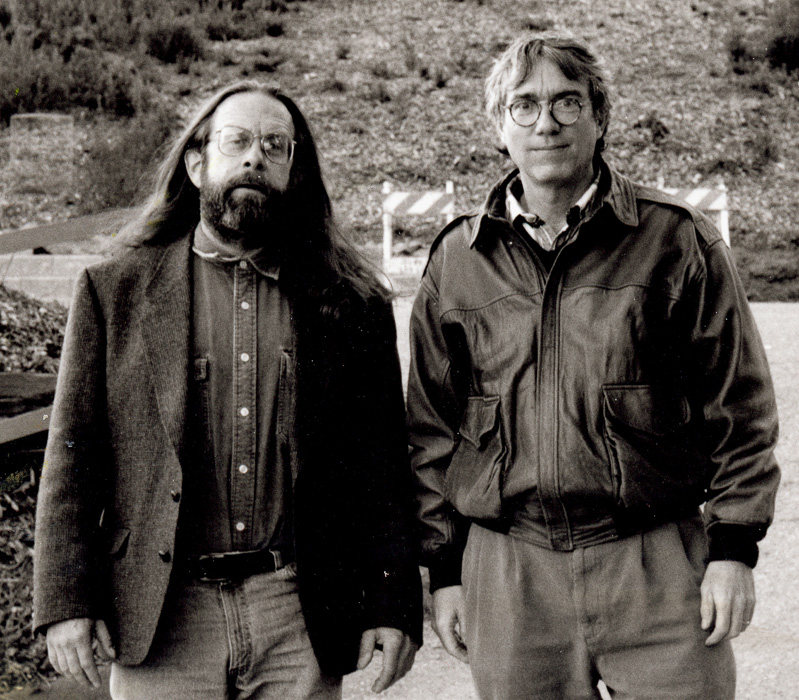
To make things even odder, my old writer friend Gregory Gibson) shown above in full Frank Shook mode) helped me get a book deal with Wired for my Saucer Wisdom book. Wired wanted to expand from being a magazine to publishing books as well. I took Greg to a meeting with the Wired editors and convinced them that Greg really was the saucer abductee Frank Shook, and that my book was in fact non-fiction and not a novel at all. Good times.
If you read the book, you’ll figure it all out… It has several useful prefaces and introductions, two of them by Bruce Sterling.
In any case Saucer Wisdom has a very clear discussion of the lifebox notion.
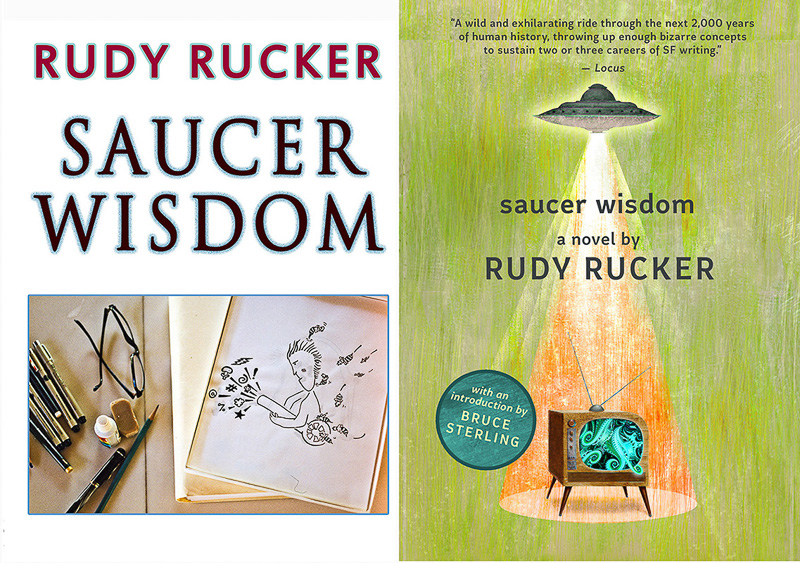
The aliens show Frank Shook a mid-twenty-first-century commercial for something called a lifebox. The slogan is Remember Me. The lifebox is a little black plastic thing the size of a pack of cigarettes and it comes with a light-weight headset with a pinhead microphone, like the kind that office workers use. The ad suggests that you can use your lifebox to create your life story, to make something to leave for your children and grandchildren.
Frank gets the aliens to find an old man who is actually using a lifebox. His name is Ned. They watch Ned from the saucer. Somehow the saucer can use dimensional oddities to get very close to someone but still be invisible to them. The aliens have control over their size-scale and refraction index; they can make the saucer as tiny and transparent as a contact-lens.
White-haired Ned is pacing in his small back yard—a concrete slab with some beds of roses—he’s talking and gesturing, wearing the headset and with the lifebox in his shirt pocket. The sly saucer is able to get close enough to hear the sound of the lifebox: a woman’s pleasant voice.
The marketing idea behind the lifebox is that old duffers always want to write down their life story, and with a lifebox they don’t have to write, they can get by with just talking. The lifebox software is smart enough to organize the material into a shapely whole. Like an automatic ghost-writer.
The hard thing about creating your life story is that your recollections aren’t linear; they’re a tangled banyan tree of branches that split and merge. The lifebox uses hypertext links to hook together everything you tell it. Then your eventual audience can interact with your stories, interrupting and asking questions. The lifebox is almost like a simulation of you.
Frank Shook gets the aliens to skip forward in time until past when Ned has died. They observe Ned’s grandchildren, little Billy and big Sis. They’re playing with one of the lifebox copies that Frank left. The kids call the lifebox “Grandpa,” but they’re mocking it too. They’re not putting on the polite faces that kids usually show to grown-ups. Billy asks the Grandpa-lifebox about his first car, and the lifebox starts talking about an electric-powered Honda and then it mentions something about using the car for dates. Sis—little Billy calls her “pig Sis” instead of “big Sis”—asks the lifebox about the first girl Grandpa dated, and Grandpa goes off on that for a while, and then Sis looks around to make sure Mom’s not in earshot. The coast is clear so she asks some naughty questions. “Did you and your dates do it? In the car? Did you use a rubber?” Shrieks of laughter. “You’re a little too young to hear about that,” says the Grandpa-lifebox calmly. “Let me tell you some more about the car.”
Frank and the aliens skip a little further into the future, and they find that the lifebox has become a huge industry. People of all ages are using lifeboxes as a way to introducing themselves to each other. Sort of like home pages. They call the lifebox database a context, as in, “I’ll link you a link to my context.”
Not that most people really want to spend the time it takes to explicitly access very much of another person’s full context. But having the context handy makes conversation much easier. In particular, it’s now finally possible for software agents to understand the content of human speech—provided that the software has access to the speakers’ contexts.
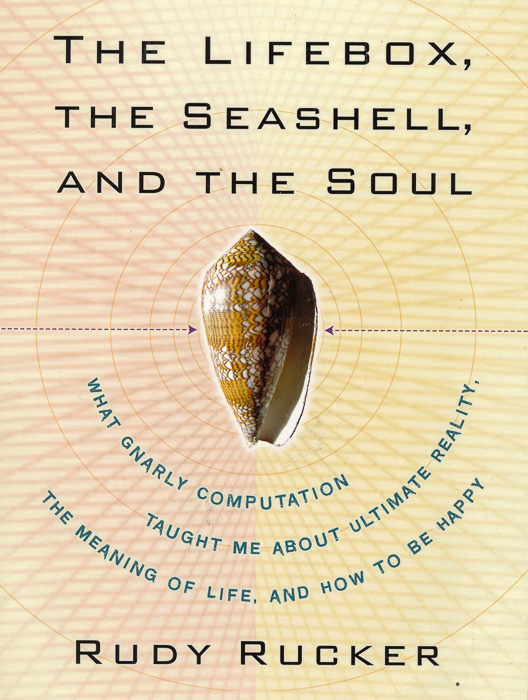
I got very heavily into discussing lifeboxes in my tome, The Lifebox, the Seashell, and the Soul, published by Thunders Mouth Press in 2005, and now available from Transreal Books. If you go the book page you can buy print or ebook copies or read it for free online.
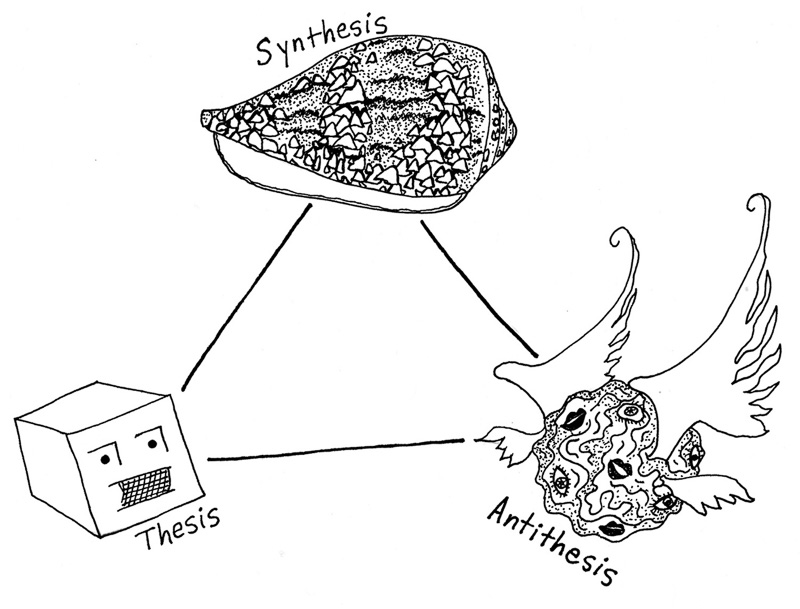
By the way, the idea behind the title is that the Lifebox is a digital representation of a human, the Soul is the idea of a fully analog ethereal person, and the Seashell relates to Stephen Wolfram’s idea of generating gnarly patterns by using cellular automata rules akin to those that generate the surface patterns on cone shells. The image shown here was drawn by my daughter Isabel Rucker, who did the illos for The Lifebox, the Seashell, and the Soul.
And here’s part of the discussion of lifeboxes in that book, preceded by a photo of me and the three kids one Easter morning in the early Seventies.
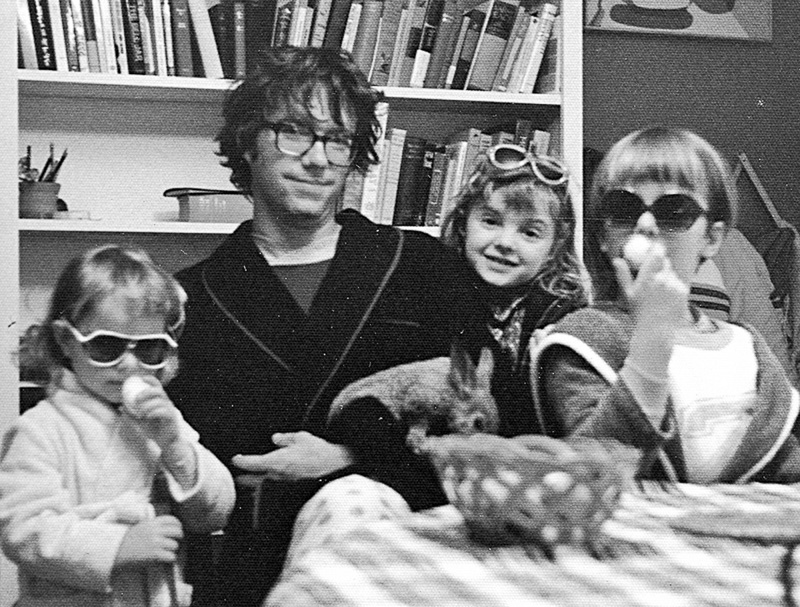
One of the most venerable dreams of science fiction is that people might become immortal by uploading their personalities into some kind of lasting storage. Once your personality is out of your body in a portable format, it could perhaps be copied onto a fresh tank-grown blank human body, onto a humanoid robot, or, what the heck, onto a pelican with an amplified brain. Preserve your software, the rest is meat!
In practice, copying a brain would be very hard, for the brain isn’t in digital form. The brain’s information is stored in the geometry of its axons, dendrites, and synapses, in the ongoing biochemical balances of its chemicals, and in the fleeting flow of its electrical currents. In my 1982 cyberpunk novel Software, I wrote about some robots who specialized in extracting people’s personality software—by eating their brains. When one of my characters hears about the repellent process, “[his] tongue twitched, trying to flick away the imagined taste of the brain tissue, tingly with firing neurons, tart with transmitter chemicals.”
Let’s look at a much weaker form of copying a personality. Rather than trying to exactly replicate a brain’s architecture, it might be interesting enough to simply copy all of a person’s memories, preserving the interconnections among them.
We can view a person’s memory as a hyperlinked database of sensations and facts. The memory is structured something like a Web site, with words, sounds, and images combined into a superblog with trillions of links.
I don’t think it will be too many more years until we see a consumer product that makes it easy for a person to make a usable copy of their memory. This product is what I call a lifebox.
My idea used to be that your lifebox will prompt you to tell it stories, and it will have enough low-level language recognition software to be able to organize your anecdotes and to ask you follow-up questions. As you continue working with your lifebox, it builds up a database of the facts you know and the tales you spin, along with links among them. Some of the links are explicitly made by you, others will be inferred by the lifebox software on the basis of your flow of conversation, and still other links are automatically generated by looking for matching words.
[As of 2023 it’s evident that, instead of interviewing the person, you can use an “unsupervised learning” approach, and evolve a neural net algorithm that examines all of the target person’s written and spoken outputs, and evolves a pattern of weights for a neural net to match the arrangements of words.]
And then what?
Your lifebox will have a kind of browser software with a search engine capable of returning reasonable links into your database when prompted by spoken or written questions from other users. These might be friends, lovers, or business partners checking you out, or perhaps grandchildren wanting to know what you were like.
Your lifebox will give other people a reasonably good impression of having a conversation with you. Their questions are combed for trigger words to access the lifebox information. A lifebox doesn’t pretend to be an intelligent program; we don’t expect it to reason about problems proposed to it. A lifebox is really just some compact digital memory with a little extra software. Creating these devices really shouldn’t be too hard and is already, I’d say, within the realm of possibility—it’s already common for pocket-size devices to carry gigabytes of memory, and the terabytes won’t be long in coming.
There is a sense in which saving only your memories is perhaps enough, as long as enough links among your memories are included. The links are important because they constitute your sensibility, that is, your characteristic way of jumping from one thought to the next.
My expectation is that in not too many years, great numbers of people will be able to preserve their software by means of the lifebox. In a rudimentary kind of way, the lifebox concept is already being implemented as blogs. People post journal notes and snapshots of themselves, and if you follow a blog closely enough you can indeed get a feeling of identification with the blogger. And blogs already come with search engines that automatically provide some links. Recently the cell phone company Nokia started marketing a system called Lifeblog, whereby a person can link and record daily activities by using a camera-equipped cell phone.
I like the idea of a lifebox, and I’d like to have one. I envision a large database with all my books, all my journals, and a connective guide-memoir—with the whole thing annotated and hyperlinked. Eventually I’d want to throw in some photographs—I’ve taken thousands over the years. And it should be feasible to endow my lifebox with interactive abilities; people could ask it questions and have it answer with appropriate links and words. My finished lifebox might take the form of a Web site, although then there’d be the thorny question of how to get any recompense for the effort involved. A commercial alternative would be to market it as a set of files on a portable data storage device of some kind.
[I included some of this material in a paper with Leon Marvell, “Lifebox Immortality & How We Got There.” And Marvell adds some further speculations.]
 [Photo credit: Bart Nagel]
[Photo credit: Bart Nagel]
I have in fact made a crude lifebox in the form of an online search engine that finds user-selected target phrases in my collected writings. See Rudy’s Lifebox online. My first stab at a personal pyramid of Cheops!
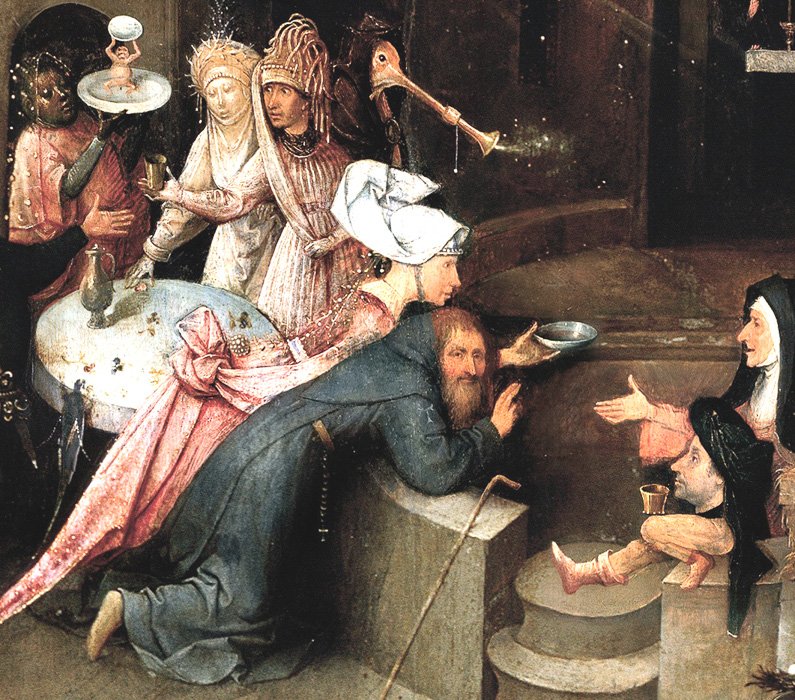
Use case: I used the Rudy’s Lifebox tool to search for “lifebox,” and I found, aha, a great blog post I posted in 2019, “Talk on Lifebox for Telepathy and Immortality.” Check it out! You might think of the 2019 post as a missing addendum to today’s post, also it links to a podcast. Convenient invention, this lifebox…
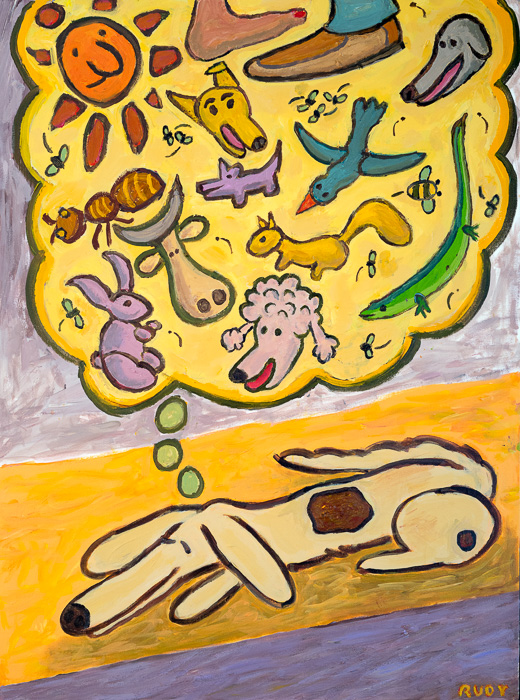
And, as I said earlier, the cool thing happening now is that the chances of animating our lifeboxes into something like interactive AI are going up, thanks to Large Language Models and such tools as ChatGPT. (As mentioned above, John Walker and I posted about these new tools last month.) We’re not there yet, but it’s a big step.

In my latest novel, Juicy Ghosts, I visualized how the business of software immortality might actually play out. Here’s a scene where a woman named Mary has died on Earth. A con-man named Carson Pflug has helped Mary to set up a lifebox of herself on a server farm called Skyhive. The lifebox storage is “free.” If you agree to certain conditions…
Mary is in her lifebox self. She’s an AI, programmed in Spork, and coupled to her laboriously assembled data-base. She wears a sim that’s a texture-mapped wire-frame model of a woman living in a jive-ass virtual reality generated by the Skyhive server. Not that her AI mind thinks of it that way. To her, the scene feels authentic, in a bland way. Like being on tranks in an airport lounge.
Her room in the Skyhive cliff city is still very plain. A wooden chair, a gray floor, white walls. She goes to the balcony. Some of those so-called storks flap by. And then she sits in her chair for a very long time, thinking things over and, frankly, resting. She hasn’t had a rest like this for years. Twelve hours go by, or maybe thirty-six. No easy way to judge time here. There’s no clocks. And her virtual body never gets sore from sitting in one place.
“Would you like to personalize?” says a voice, finally interrupting Mary’s reverie. A woman’s voice echoing in her head. “Anything you want!”
“What are you?” says Mary.
“I’m your room,” says the voice. “Let’s pick some pleasant images for your walls. And I can copy furniture from your home in San Lorenzo.”
“Why bother,” Mary tells the room. “Pretty soon I’ll be in my clone.”
“No peripheral is currently registered to your account,” says the room.
Mary feels a pang of fear. Did Carson Pflug double-cross her? She wouldn’t put it past him. But she’s not gonna discuss this with the perky voice of her room.
“I think I’m getting a body soon,” says Mary. “But can I go out and look around? Just in my virtual body?”
“Feel free,” says the room. “Explore our fine amenities. And—would you be willing to answer a short survey about my service thus far?”
Mary walks to the balcony railing once again. She notices now that the cliff slants back a little, like giant stairs with really tall steps. She sees a piazza about a hundred meters down, with lifebox people walking around in sim bodies, some of them standing by a pickup truck. Might be worthwhile to find out what’s going on. So, what the hell, she jumps off the railing. It’s not like she can die, right?
Right. Although she picks up a certain amount of speed, she lands in the piazza unscathed. A crouch and a bounce. A thin lifebox woman nearby looks at her. Mimes a salute.
“Welcome to the labor pool,” says the woman. She’s awkward, with lank hair and a crooked mouth. Black narrow pants and a striped shirt. A geek.
“How do you mean?” goes Mary.
“Are you rich?” the woman asks. “Did you endow a trust fund to pay your monthly fee?”
“A friend got me in here,” says Mary. “Carson Pflug. He’s a Skynet exec. He says he’s going to get me a clone.”
“Carson!” says the woman with a laugh. “And he told you it was a one-year free trial, right?” A hole appears in the woman’s sim-body chest. “People say I’m heartless, but I’m not,” she continues, pointing out a cartoony, dark red heart inside. “I nurse a secret passion, hmm? My name is Leeta Patel.”
Mary knows she’s recently heard that name, but just now it doesn’t click. She’s still not over her death experience. “I’m Mary,” is all she says.
“And, yes, it’s true that your first year is free,” says the woman. “But eventually everyone in Skyhive pays rent, and if they don’t have it, they do gigwork, no matter how they got here. You probably didn’t read your full end-user license agreement?”
“Did you read yours?” challenges Mary.
“Nobody’s ever read it,” says Leeta with a little laugh. “Nobody ever will. It’s a hundred million words long. Written by hateful lawyer bots. And do you trust Carson Pflug? Hah. You’re a standard Skyhive client, that’s all.” She points to a group of lifebox people around the pickup truck. “Let’s see what kind of gigs are on offer today. To help you understand what’s in store.”
The sim in the back of the pickup truck isn’t even bothering to look human. He’s a squat cube like a foot stool, with a speaker grill for a mouth. As he rattles off a list of available jobs, day-workers hop into the truck one by one. The truck’s capacity seems endless.
The workers: Winged woman with a cane. Stout man with checked pants and pinwheel eyes. Jittery fashion-model lady with green skin. Sniggering, pimply teen in a clerical collar. Spider with a woman’s head. Twelve-foot-tall man in a stovepipe hat. Talking dog. Velvet-clad lady wearing jeweler’s loupes. Hieroglyph person with an ibis head. School-marm with a fat text-book. Vagabond cupping a blue glow in his hands. Dancing man with gem-crusted skin. A bowling ball with three pale-blue eyes.
The jobs: Dragonfly drone. Slime sculptor. Teep tweaker. Non-sex worker. Spam amp. Ant herder. Rind design. Spork coach. Flicker cladder. Tuba tamer. Art emulator. Rhino horner. Dream dupe.
A chime sounds in Mary’s head. It’s Miu Miu in San Lorenzo. Miu Miu is a so-called psidot, that is, a piezoplastic device on the back of the neck of a human-body clone of Mary’s old body. Yes. It’s going to work. The psidot sends and receives signals from Mary’s lifebox, and feeds them into the clone.
“Back in action,” Miu Miu the psidot signals to Mary’s lifebox. “Your clone is ready!”
“Bye,” Mary tells Leeta. In the never-never land of the Skyhive cliff, it’s no great effort for Mary to hop a hundred meters straight up—to her flat’s balcony. She takes a seat in her wooden chair.
“Ready,” she tells Miu Miu.
And now she’s linked to her cloned body, and—what?
She’s in her house with most of the lights off—alone with Carson Pflug. She’s sitting on the couch and Carson is standing over her, taking off his shirt. It’s quite dark outside and it’s raining heavily. Mary can see her jeans and sweatshirt on the floor. She’s naked. Her body looks good. Her clone is high-end.
So, okay, lifebox Mary is processing clone-Mary’s inputs, deciding what to do next, and sending signals to her psidot device Miu Miu, who controls the clone body’s muscles. Feel, think, do. Juicy ghost.
Carson leans down to touch her. No. Mary pops to her feet and shoves Carson in the chest: a swift, implacable, abrupt, and precisely calibrated impact, pre-computed by lifebox Mary in the cloud. Carson thuds to the floor like a sack of cement.
“No sex with you,” Mary tells Carson. “Never.” She dons her jeans and sweatshirt from the floor. They’re a bit tight. Clone Mary is more turgid than wasted old Mary was.
“I don’t know why you have to be like that,” says Carson, awkwardly regaining his feet and straightening his clothes.
“Men like you never do know,” says Mary. “Shut up and let me think.”
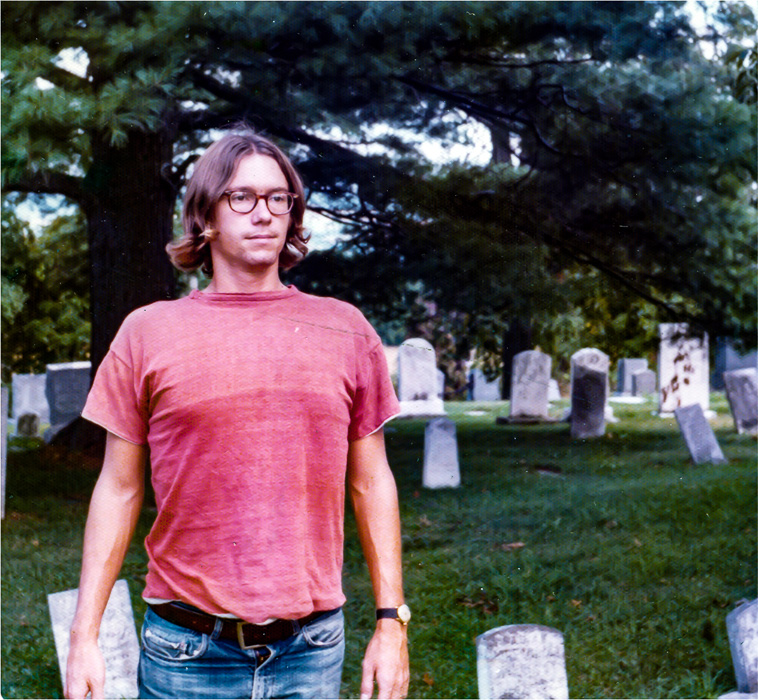
And don’t forget: When it comes to digital immortality, Rudy Rucker got there first!
I wasn’t kidding when I wrote these stories and books. Yes, I was laughing and having a good time, but I was serious. And now it’s all coming true.
So give me some credit.

In memory of Sylvia Rucker, February 8, 1943 – January 6, 2023.









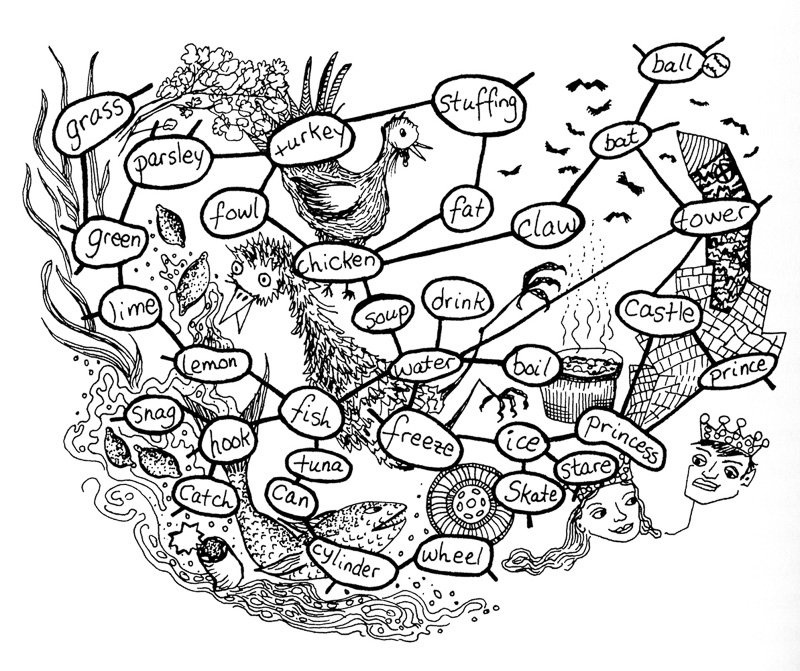
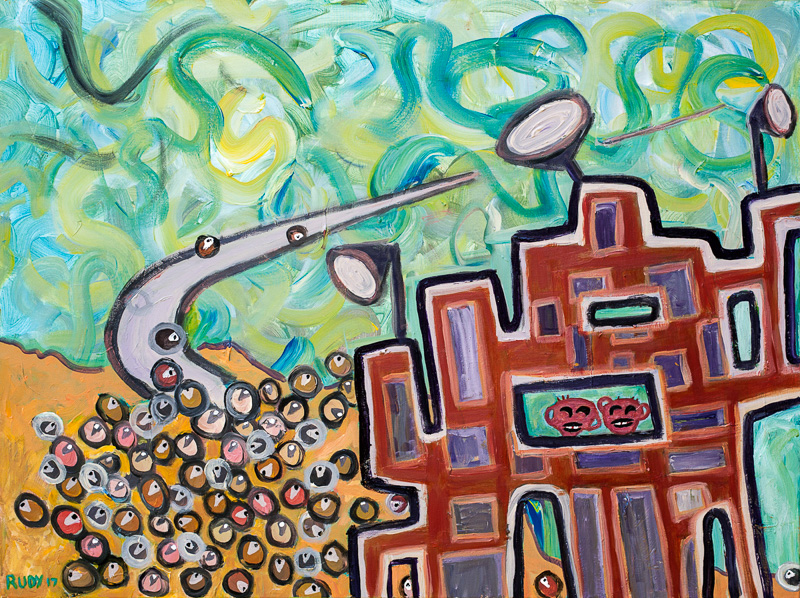
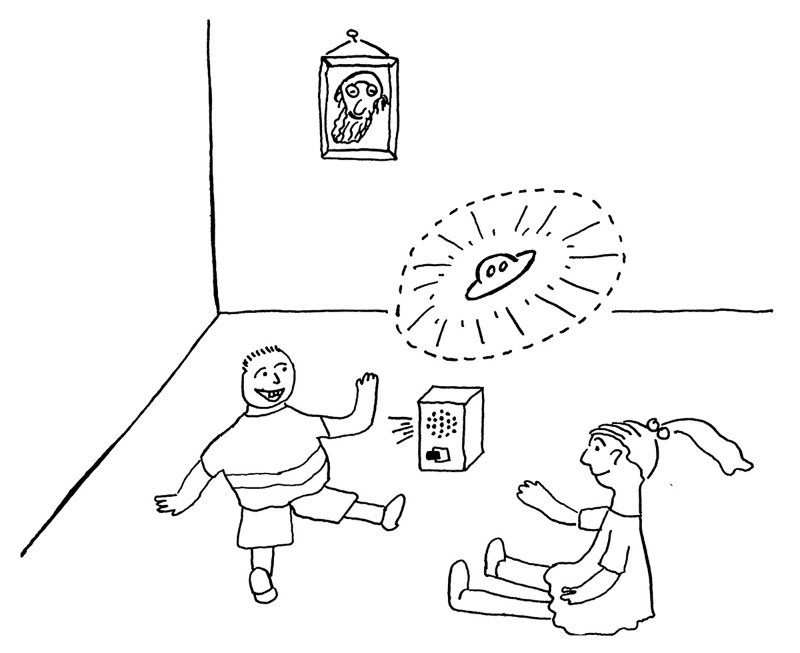

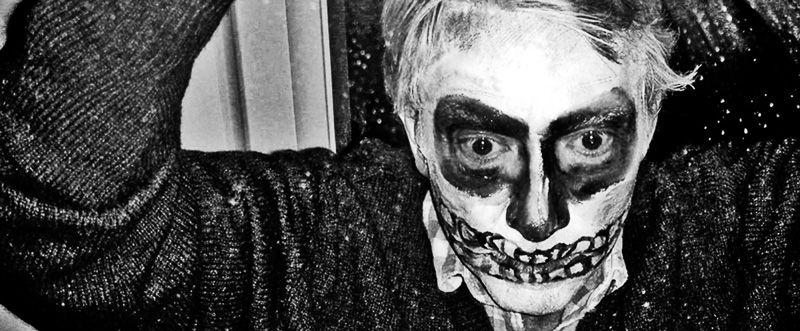



January 8th, 2024 at 6:28 pm
Yeah, I think you have it locked down. I think I recall stories where someone used a computer to transfer memories from one brain to another, but as you say, ‘software’ was barely a word back then.
January 11th, 2024 at 11:56 pm
I really enjoyed your Ware series. Not sure if something passed a super Turing test of being indistinguishable from me makes it sentient or me. But interesting. And I do wonder about giving the info for a lifebox to plainly unscrupulous vendors we have in the field currently. I must also re-read the John Sladek novel The Müller-Fokker Effect sometime.
February 24th, 2024 at 10:06 am
I gave you credit when I wrote about Life After Death – As a Parrot. The first time was in 2019 and then a recent post-LLM update where I dove deeper into how to build a personality replica: https://tedwade.substack.com/p/life-after-death-as-a-parrot
I agree that writing is a great way to be remembered, but not everyone can make that work.
Can’t wait to get ahold of Juicy Ghosts!
April 30th, 2025 at 11:36 pm
Thanks Donovan, Frank, and Tec. I especially like your mention of me in your post on the parrot, Ted.